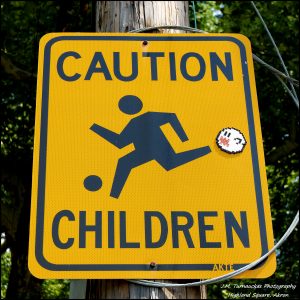April 18 2017
Here at Mitcham Rehab we often see active young people with pain that can limit their participation in sport. Kids enjoy many benefits of physical activity, so our aim is to keep them out there having fun and staying healthy. Calcaneal Apophysitis is a relatively common cause of heel pain in children and adolescents. It is also known as Sever’s disease, but it’s not as scary as this name sounds – the foot most certainly won’t fall off! Typically, children aged between 8-13 years present with pain at the back of the heel during or after activity. Children with heel pain often limp or avoid contacting the ground with the heel when walking.

Photo by Mark Turnauckas
Diagnosis of Calcaneal Apophysitis
Radiographic imaging is usually not required to diagnose calcaneal apophysitis. The diagnosis is made from a clinical assessment and ruling out other potential causes of heel pain. Pain with the ‘squeeze test’ that compresses the heel is a good indicator.
Causes of Calcaneal Apophysitis
Calcaneal apophysitis is thought to be caused by tension, compression or impact forces through the apophyseal tissues (where the Achilles tendon attaches to the heel). In children the apophyseal tissues are sensitive to increases in load as the apophysis is still maturing.
The condition shows similar clinical features to Osgood Schlatter disease at the patellar tendon of the knee. Mitcham Rehab physiotherapist Dr. David Spurrier has been involved in research investigating the stages of maturation of the attachment of the patellar tendon at the tibial apophysis. Understanding how these sensitive tissues adapt to loading is highly valuable in effective rehabilitation.
Treatment of Calcaneal Apophysitis
There are various commonly implemented treatments for calcaneal apophysitis, although supporting evidence for treatment effectiveness still has limitations. Current best practice treatment for calcaneal apophysitis is similar to that for insertional Achilles tendinopathy in adults. Treatments are directed at relieving pain, managing loads on the apophysis and increasing the strength of the lower leg muscles.
Ice and pain relieving medication
Whilst there is not supporting evidence for the effectiveness of these treatments in isolation for Calcaneal Apophysitis, they are often used in conjunction with activity modification (see James et al, 2013 in references below)
Heel raises
Heel raises have been shown to have good effect at 1-2 months as compared to pre-fabricated orthotics in a trial run by researchers in Victoria (see James et al, 2016 in references below)
Activity Modification
Absolute rest is often not required, is no fun and is not advised. Complete rest results in a weakened Achilles tendon and calf that is less likely to cope with returning to normal loading activity. Relative rest from activities that involve high load on the Achilles tendon (high speed running, jumping) will allow the pain in the heel to settle. Keeping kids active also keeps them happy!
Isometric calf strengthening exercise
Isometric calf strengthening is relatively low load for the apophysis as compared to running and jumping. It is a means of increasing the capacity of the calf and Achilles tendon with minimal to no pain
Strengthening of lower limb muscles
Calf strengthening improves the capacity of the Achilles tendon to cope with loads. Strengthening of the gluteals, quads and hamstrings is a strategy designed to reduce excessive load on the calf and Achilles tendon. Calf strengthening should begin at an appropriate level depending on the capability of the child. This is often when isometric calf strengthening can be completed with little to no pain. Any mild pain with exercise should settle quickly afterwards
The Good News
Most cases of calcaneal apophysitis do well with a course of treatment as described in this article. The difficulty is initially finding the right amounts of activity that still load and strengthen the Achilles and calf, without aggravating pain in the heel.
If your child has heel pain that is persisting with activity, please contact us. We’d love to help keep them active, and get them back to full participation and enjoyment of their sport!




